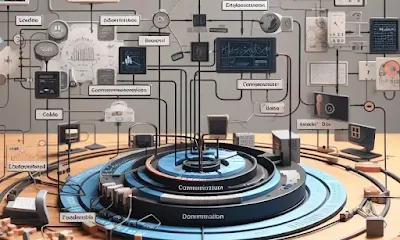Communication is the cornerstone of any successful human interaction. It's the bridge that connects people, allowing them to share ideas, feelings, and information. Traditionally, communication was viewed as a linear process with a sender, a message, and a receiver.
However, as our understanding evolved, so did our models of communication. The interactive model emerged, introducing a dynamic, two-way flow of information that revolutionized our understanding of human interactions.
Advantages of the Interactive Model
Real-time Feedback
One of the standout features of this model is the real-time feedback loop. Unlike the linear model, where feedback is often delayed, the interactive model fosters immediate reactions. This ensures clarity and understanding, as misunderstandings can be addressed on the spot.
Example: Consider online chats where both participants can type and react simultaneously.
Enhanced Engagement
The two-way nature of this model makes interactions more engaging. Both parties are active contributors, leading to richer and more meaningful exchanges.
List of benefits:
- Improved relationship building.
- Enhanced information retention.
- Greater satisfaction in conversations.
Flexibility in Conversation
The dynamic nature of the interactive model allows for adjustments in real time. If one party perceives confusion or a lack of interest, they can alter their message or approach immediately.
Application in Modern Tech
Digital Platforms
Today's digital platforms like social media, chat apps, and video conferencing tools are prime examples of the interactive model at work. They thrive on instant interactions, allowing users to send, receive, and react to messages instantly.
Virtual Reality (VR) and Augmented Reality (AR)
These technological advancements further showcase the potential of interactive communication. In virtual environments, users can interact with each other and their surroundings in real-time, offering an immersive communicative experience.
Conclusion
The interactive model of communication isn't just a theoretical construct; it's a reflection of our natural human interactions. By acknowledging the dynamic nature of communication, we can foster more meaningful, clear, and effective exchanges in both our personal and professional lives. Whether face-to-face or through the latest tech platforms, embracing interactivity is the future of effective communication.

